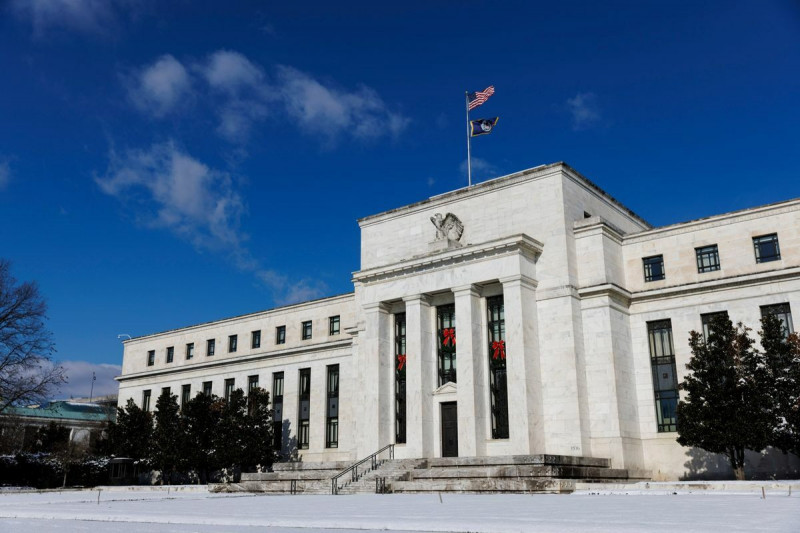Citigroup CEO Jane Fraser and London School of Economics professor Ricardo Reis both believe that the Fed's terminal interest rate will come to around 5.5%, about 2 yards (0.5 percentage points) higher than the Fed's forecast, and believe that this will impact on financial markets.
(Bloomberg)
[Compile Lu Yongshan/Comprehensive Report] What is the final interest rate of the US Federal Reserve (Fed) has become the focus of attention in the global financial market this year.
The interest rate dot plot released after the Fed’s regular meeting in December last year predicts that the terminal interest rate will reach 5.1% this year, but Citigroup CEO Jane Fraser and London School of Economics professor Ricardo Reis both believe that the terminal interest rate will reach 5.1%. It will be about 5.5% in the future, which is about 2 yards (0.5 percentage points) higher than the Fed's forecast, and it is believed that this will impact the financial market.
After the Fed’s regular meeting in December last year, it announced a 2-yard rate hike, raising the federal funds rate to between 4.25% and 4.5%, the highest in 15 years. ; The market expects the Fed to stop raising interest rates when the terminal interest rate reaches around 5%.
Please read on...
However, Fraser recently accepted an interview with Nikkei News that although the overall inflation in the United States has peaked, service inflation is still painfully persistent. It is predicted that the Fed will raise interest rates to around 5.5% in May At some point the U.S. economy may be in recession.
Reese also believes that the Fed will eventually increase the terminal interest rate, and it will reach at least 5.5%, exceeding the current market expectations, and the financial market is bound to be impacted.
Reiss pointed to signs that Fed officials are unwilling to take any risks. "They don't realize that inflation continues to rise in 2021, which makes them unhappy, so I think they are inclined to over-tightening, whether for reasonable reasons or because They're preoccupied with righting past mistakes, and they're going to tighten even more than the public expects."
Reiss pointed out that the U.S. economy is at a turning point, and the Fed does face some difficult choices, the key being wages.
The data released by the US Department of Labor on the 6th showed that the number of non-agricultural employment in the United States increased by 223,000 in December last year, which was higher than market forecasts.
"The Fed will have to weigh this year whether wage increases are too much, just enough, or too little," Reiss said. "If wages don't rise much, inflation could quickly return to the 2% target. If wages rise in sync with productivity, it doesn't have to." Big rate hikes, inflation will drop to 2% within a few years, but this will be difficult because productivity is a difficult economic variable to measure. If wages rise, this may cause companies to raise the price of products, which will start a wage and price spiral There is an upside risk that the Fed may overreact to higher wages."
Grasp the pulse of the economy with one hand I subscribe to Free Finance Youtube channel
Already added friends, thank you
Welcome to 【Free Finance】
feel good
Already liked it, thank you.
related news
